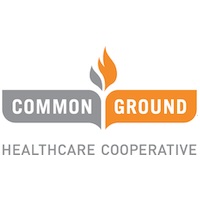
Wisconsin’s gap between private and Medicare hospital payments among highest in nation, per study

The disparity between what private health plans and Medicare pay Wisconsin hospitals is among the highest in the nation, according to a new report
.
But hospitals in the state again raised concerns with the methodology used by the RAND Corporation.
The study found prices paid to Wisconsin hospitals during 2020 by employers and private insurers for inpatient and outpatient services averaged 307 percent of what Medicare would have paid, compared to 224 percent nationally. Only South Carolina, West Virginia and Florida had a bigger gap.
Chris Whaley, the study’s lead researcher, said the “magnitude in variation of prices” across different states and hospitals always surprises him.
“This year was certainly no different,” he said.
Wisconsin ranked 10th overall in 2020.
Nationally, the report also found COVID-19-related care closely mirrors prices for general hospital care when it comes to variation. It also found that facilities that compete with hospitals for care have lower prices, with ambulatory surgical centers averaging prices that are 162 percent of Medicare.
Whaley said that the sample is representative, with Wisconsin being one of the states where they had a high volume of claims. That includes about $400 million in claims just for 2020.
This is the fourth version of the report. It includes new data sources, like state all-payers claim databases in several western states. While Wisconsin has such a database, it wasn’t included in the study, Whaley said.
Cheryl DeMars, CEO of The Alliance, which works with employers in Wisconsin, said healthcare costs have ‘become a drain on our economy” and must be addressed.
“The RAND study raises important questions about the prices we are paying here in Wisconsin, particularly in comparison to neighboring states like Illinois and Michigan where the relative prices paid by employers and their employees are significantly lower,” she said.
Joanne Alig, senior vice president of public policy at the Wisconsin Hospital Association, said the study’s “conclusions are still problematic, and should be questioned.” She said the study’s sample size represents just 3 percent of claims from hospitals, and that there are “wide swings” in which hospitals are measured from one RAND study to the next.
Hospitals have long argued that they lose money on Medicare patients. On top of that, Wisconsin’s Medicare rates are among the lowest in the nation compared to other states, according to Alig.
“If our commercial rates are the same as another state that has higher Medicare rates, we’re going to look like our disparity is bigger,” she said.
In addition, Alig said Wisconsin hospitals receive high marks for their quality of care.
Whaley noted they’re not using Medicare as a price endpoint. They’re instead using the methodologies that Medicare has developed to compare hospitals that treat different types of patients and perform different types of procedures.
And he noted that Medicare rates are designed to be at a level where hospitals can break even.
This article first appeared in the Wisconsin Health News daily email newsletter. Sign up for your free trial here.




















.jpg?bwg=1612548324)










